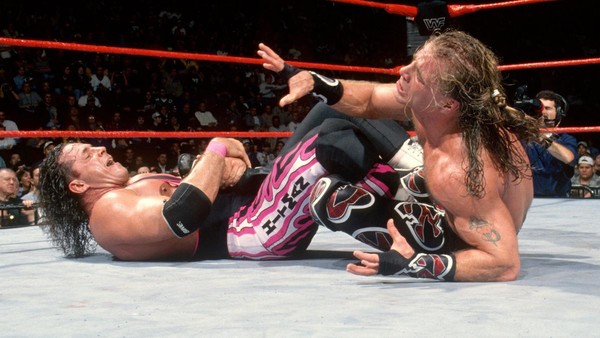How Wrestling's Present Brilliance Has RUINED Its Future
Why does everything look the same?

If you grew up in the millennial age as a fan of pro wrestling, you saw it all.
Wrestling didn't start in 1984, and Vince McMahon didn't bring wrestling out of the smoky bingo hall and into the brightly-lit arena - but it might as well have, for fans of a certain age, because they matured and evolved hand in hand with the form itself. If you're pushing 40, the WWF was calibrated to your totally naive and undiscerning child's mindset in the late '80s and early '90s. The heroes sold in wildly histrionic fashion, when the baddies were "getting them", and you went apesh*t in your living room when even Brutus 'The Barber' Beefcake rained down 10 punches on the top turnbuckle. When your friends on the schoolyard drifted away, as the fad died, you fell for Bret Hart and Shawn Michaels. You understood that wrestling was an art, not a trend, and idolised North America's two best practitioners of it. You were under the spell of the athleticism, the technique, the storytelling prowess of the WWF Workrate Years. Then, as you entered awkward and scary adolescence, captivated by violence and the aspirational grown-up feel of it, the crazed arena-wide brawls, backstage fights and dangerous stunts captured your imagination. Much of the work was rudimentary, but ladders and tables were sick. You didn't know what CTE was back then, so rather than "horrifyingly reckless", unprotected chair shots to the dome were in fact "kewl".
Your tastes were more wide-ranging by your late teens, and you enjoyed Kurt Angle and Blitzkrieg as much as you did Steve Austin's lava-hot shortcuts, but when the Invasion was botched, the feeling probably wasn't quite the same. Worse was yet to come: if you were a millennial, you may have even felt betrayed by what was now known as WWE. They, and they were right to do it, eventually marketed their product towards the younger fan. "You've just lost yourself a customer!" you shouted helplessly as John Cena broadened his act to become Hulk Hogan's spiritual, homophobic successor.
What was this sh*t?
Does WWE even know how good Paul London is?
And so you ventured outside of the monopoly. You may have read Power Slam magazine or the Wrestling Observer or trawled the boards and discovered the ROH DVD market, or went back in time and finally realised that the AJPW King's Road era was as good as everybody said it was. There's a good chance, if your fandom took you in the direction of AEW and were first inclined to embrace all forms of wrestling, that you embarked on a completionist journey of the hipster circuit. That you watched When Worlds Collide and the Super-J Cup.
If you grew up in the millennial age as a fan of pro wrestling, there's a very strong probability that you are a bit bored and jaded these days.
CONT'D...(1 of 5)